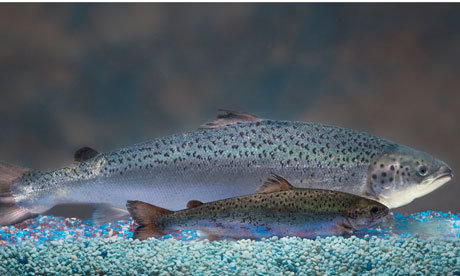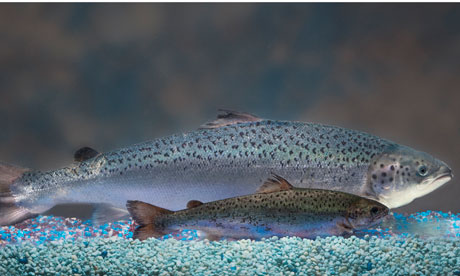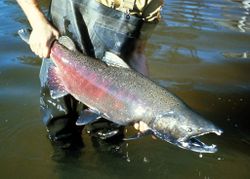And the justification for that is that dumb Americans don’t need to know what they eat, or what?

(NaturalNews) As the FDA stands poised to approve genetically modified (GM) salmon safe for public consumption, the next logical question concerns how GM salmon would be labeled. Would the fish come with a large red warning that says, “Genetically modified salmon”?
As it turns out, no. In fact, the FDA has already gone on the record stating it will not require any special labeling of genetically modified salmon. You, the consumer, just have to take a wild guess because you’re not allowed to know what you’re really eating.
The biotech industry takes this absurdity one step further by claiming that labeling GM foods would just “confuse” consumers. David Edwards, the director of animal biotechnology at the Biotechnology Industry Organization, explained it in this way: “Extra labeling only confuses the consumer,” he says. “It differentiates products that are not different.”
Except that they are different. If they were really no different, then AquAdvantage company wouldn’t be growing them. The whole point of genetically modified salmon is that they are modified with extra growth hormone genes to make them grow more quickly. I don’t know where David Edwards is getting his information, but in the rest of the world, when something is different, that means it’s different.
If it’s no different, then why are so many GM salmon processes patented? If it’s no different, there would be nothing to patent. The entire purpose of a patent is to make a legal claim that “we invented something different” and we own the monopoly rights to it.
The GM salmon industry can’t have it both ways, you see. They can’t claim it’s so unique that their technologies and animals should be proprietary or patented, yet when it comes to food labeling, they claim there are no differences. It’s either different or it isn’t, and in the case of GM salmon, only an outright liar would look you in the eye and claim GM salmon is identical to regular farmed salmon or wild-caught salmon.
FDA insists on keeping people in the dark
The FDA, for its sad part in this saga, claims that it would be against the law to require the honest labeling of GM foods. This agency claims that since GM salmon is identical to regular salmon (it’s “no different” once again, they say), they can’t require it to be labeled any differently.
Read moreFDA Refuses to Require Labeling of GM Salmon






